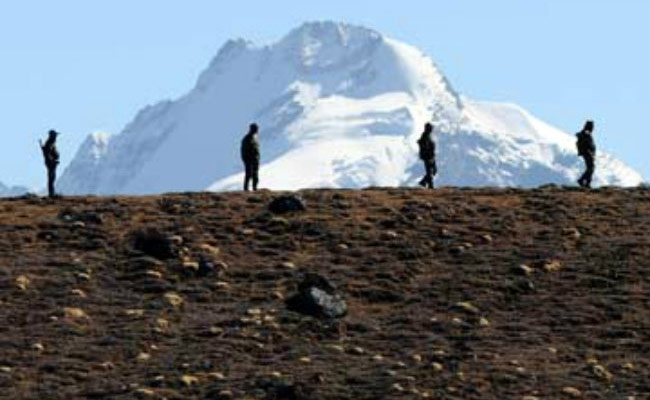
(TibetanReview.net, Aug17, 2017) – Locked in an intractable standoff at Doklam in the eastern sector of their border since the middle of June, Indian and Chinese troops were involved in a major scuffle in the western sector in Ladakh on Aug 15 morning, said Indian media reports Aug 15-16. They said Chinese soldiers twice tried to cross the Line of Actual Control at two spots – named as Finger 4 and Finger 5 – in eastern Ladakh but were pushed back by Indian troops. Army officers from both the sides met in Leh’s Chushul sector the following day to sort out the issue.
The intrusion resulted in a major scuffle, including stone-pelting. Indiatoday.in said Aug 16 the Chinese troops resorted stone-pelting when they were pushed back by Indian forces. China’s official globaltimes.cn Aug 16 citer Reuters as reporting that Chinese soldiers carried iron rods and stones and that troops on both sides suffered minor injuries in the melee.
The reports said confrontation between the rival soldiers took place on the north bank of the Pangong Tso (or lake) in eastern Ladakh, two-thirds of which is controlled by China as it extends from Tibet to India.
“The rival troops later pulled back from the confrontation site after banner drills to defuse the situation,” timesofindia.com Aug 16 quoted an unnamed source as saying.
The Indian Army, on being contacted, refused to say anything about the latest incident, the report said.
Brigadier ranked officers from both the sides met on Aug 16 in Leh’s Chushul sector to sort out their differences. The incident at Pangong and ways to maintain peace and tranquillity along the Sino-India border in Ladakh were discussed at length at the border personnel meeting (BPM), reported PTI news agency Aug 16. It added that the issues discussed included strengthening of existing mechanism for maintaining peace and tranquillity along the border.
* * *
This is an area claimed by both countries and is one of the spots where the two sides fought pitched battles during the 1962 war, noted the tribuneindia.com Aug 15. Both armies have deployed armed boats against each other on this a 134-km long brackish lake. The region became an even bigger flashpoint when, during the 1999 India-Pak Kargil conflict, China even constructed a “track” right up to the lake’s southern bank, noted the timesofindia.com report.
Regarding the area of dispute in the Ladakh region, the tribuneindia.com report said the spurs of the mountains forming the northern bank of the lake are militarily termed as ‘fingers’. On a west-to-east axis, India claims territory till ‘Finger 8’, but is in physical control till ‘Finger 4’ only. The aerial distance between the two ‘fingers’ is about 15 km. The land north of these mountains is disputed, it added.
The report said land patrols of both sides often come face to face and a drill is followed to disengage. This includes unfurling of a banner, asking each other to withdraw. This is the first step, it added.
* * *
The timesofindia.com report said PLA soldiers continue to needle Indian forces in all the three sectors of the 4,057-km LAC – western (Ladakh), middle (Uttarakhand, Himachal) and eastern (Sikkim, Arunachal Pradesh) – in the backdrop of both sides having militarily reinforced their positions due to the Dokalm standoff near the Sikkim-Bhutan-Tibet tri-junction.
The report noted that late last month, 10-15 PLA soldiers had “transgressed” almost one km into a disputed pocket – a mutually agreed “demilitarized zone” – at Barahoti in the Chamoli district of Uttarakhand two times in quick succession.
The report said Eastern Ladakh, in particular, had emerged as a major flashpoint between the two armies, especially in the areas of Chumarr, Depsang and Pangong Tso, over the last several years.
“Transgressions occur due to differing perceptions between India and China about where the LAC actually lies, right from eastern Ladakh to Arunachal Pradesh. Around 300 such transgressions by the PLA are recorded every year,” the tribuneindia.com report quoted an unnamed source as saying.
The Doklam, standoff is different, for it is actually Bhutanese territory but coveted by China. The Doklam standoff began when Bhutan alerted India that the Chinese Army was building a road in its Doklam area, a development which is also seen as resulting in a strategic threat to India. Indian troops entered the site to stop the road building work.


